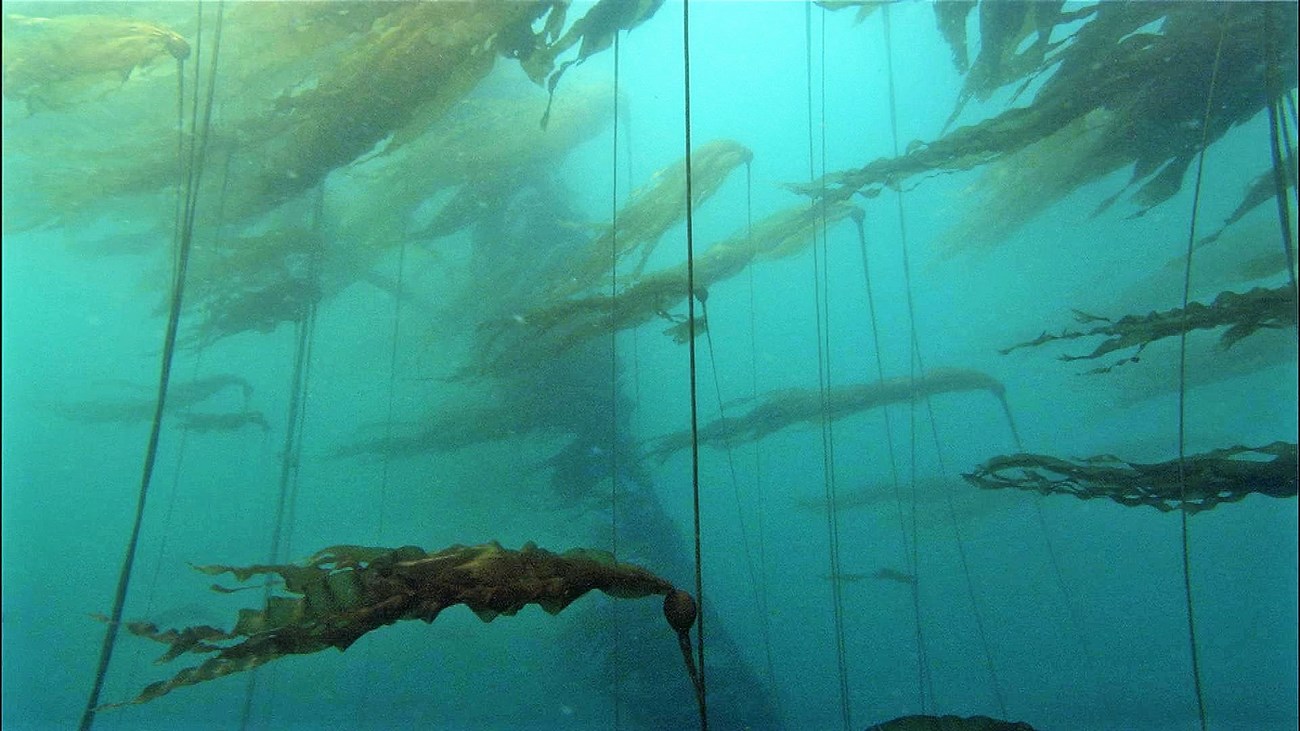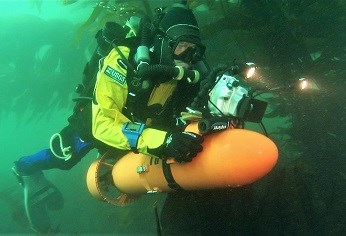
WHAT IS KELP? Kelp might look like a tree but, really, it is a kind of large, brown algae and algae are members of the Protista kingdom. Growing up from the ocean floor about 2–30 meters, and as much as 20–30 cm above the ocean's surface. Kelp does not have roots. Instead, it is secured by holdfasts that lock onto substrates made of rock, or cobble. Although it functions in a way like a root, holdfasts do not absorb nutrients. Its backbone, or stipe, grows upward from the holdfast; attached to the stipe are leaves or fronds, where photosynthesis takes place. Gas bladders (pneumatocysts) keep the top parts of the kelp afloat. Two kinds of kelp grow on the eastern Pacific coast: giant kelp (Macrocystis pyrifera) and bull kelp (Nereocystis leutkeana). Giant kelp, a perennial, has a pneumatocyst on each blade. Giant kelp has been known to live as much as seven years. Bull kelp, on the other hand, is an annual plant and has only one pneumatocyst holding up its many blades. Both kelp types live their lives in two stages: first, as spores, which are released from its parent as male or female plants, which produce sperm or eggs, fertilize and, then, grow into the kelp's second stage — as a mature plant. 
WHERE DOES KELP GROW? Rich in biodiversity, kelp forests grow along rocky shorelines, mostly on the Pacific coast, from Alaska to Baja, California. Alaska is home to three types of kelp: Macrocystis (two kinds, one of which is giant kelp), Nereocystis luetkeana (bull kelp) and Alaria fistulosa. WHAT DOES KELP NEED TO GROW? Kelp forests grow best in nutrient-rich, clear waters whose temperatures are between 42–72 degrees F (5–20 degrees C). The water must be clear so that sunlight can reach the ocean floor where the kelp life begins. If the water is too warm (warmer than 20 degrees), the kelp does not thrive as well. Its most successful growth is in geographic areas of upwelling and where the waters are always high in nutrients and always cold. For kelp to survive, it must be anchored to strong substrate, otherwise it will be yanked loose during storms. But, it also needs a moderate current. Kelp grows quickly, sometimes as much as 30–60 centimeters/day. Their life cycle varies, depending on the species. Some live for one year only; others have a longer lifespan. WHAT LIVES IN, OR DEPENDS ON, KELP? Kelp forests are home to many different species, including fish, sea urchins and other marine animals, invertebrates, such as snails, and sea otters. For part of their lifetime, kelp forests in Alaska are home to 20 or more species of fish, who are attracted to the kelp by the food supply. Some fish, such as herring and Atka mackerel, spawn in kelp beds. Mammals, such as sea lions and whales, are also likely to take up residence. Each part of the kelp - at the ocean floor, in the middle and above the water in the canopy formed by the fronds - provides a home to other species. Sea otters and sea urchins are particularly important to the health and stability of kelp forests. Sea urchins like kelp - a lot - and, if their populations get too big, they may graze a kelp forest to death; if they remain, they may also inhibit the kelp's ability to grow again in that area. Sea otters like sea urchins - a lot - which is a good thing because they can keep the urchin population under control, thus helping to preserve the kelp forests. |
Last updated: September 7, 2022
